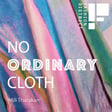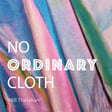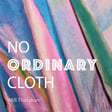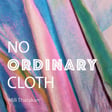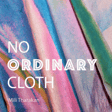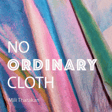
Ep 11. Dreaming of Weaving Clouds and Inventing the Digital Jacquard Handloom with Vibeke Vestby
In this episode of the No Ordinary Cloth Podcast, we speak with Vibeke Vestby, the inventor of the first-ever digital jacquard handloom.
She share about her passion for weaving as a child, her impatience with traditional looms and a trip to Italy that was pivotal in reimagining the 200 year old jacquard loom. Vibeke recounts her early inspiration, the technical evolution of the loom, and the collaborative process with the engineering company Tronrud, to bring her vision to life. Her persistence and determination results in the remarkable TC2 Digital Jacquard handloom.
Join us as Vibeke goes from teaching prisoners weaving to wanting to weave clouds and peonies and making a loom that will enable her and others to use the jacquard loom like a sketch book to quickly translate ideas and be a catalyst for creativity.
Vibeke also discusses her personal life, including how she became a trained pilot, and the importance of teamwork and curiosity in her groundbreaking work.
Tune in to learn how the TC2 digital loom, a symbol of potential, is revolutionising and democratising hand weaving, driving forward the ever-evolving ingenuity in textile weaving.
Connect with Vibeke Vestby and her team
Insta: @digitalweavingnorway
Connect with Mili Tharakan
Insta: @noordinarycloth
Linkedin: https://www.linkedin.com/in/mjtharakan/
Cover art: Photo by Siora, Photography on Unsplash
Music: Inspired Ambient, Orchestraman
Timestamp:
00:00:04: Introduction to the episode
00:00:28: Introduction to the main topic - The Loom
00:00:59: Introduction of the guest - Vibeke Vestby
00:04:49: Vibeke's passion for weaving and her early career
00:10:08: Vibeke's teaching experience in Norway's only prison for females
00:11:26: Vibeke's career at the College of Art and Design
00:11:36: Development of the first Weave Planner programme
00:12:12: Vibeke's learnings and experience at Silk Art Foundation in Lisio, Florence
00:15:04: The history of the Jacquard loom and its evolution
00:19:12: How the Jacquard loom revolutionised weaving
00:22:42: Vibeke's journey to creating the digital Jacquard handloom
00:23:13: Initial Challenges and Realisation
00:24:33: Funding and the First Prototype
00:28:29: The Difficulties of Bringing the Loom to Market
00:31:15: The Loom and its Scaleability
00:33:56: Market Adaptation and Customer Response
00:44:42: The Loom as a Tool for Generating Ideas
00:46:27: Vibeke's Background
00:49:05: Discussion on Traditional Norwegian Costumes
00:52:04: Vibeke's Interest in Flying and Pilot Training
00:57:56: Outlook on the Future of Creative Weaving
00:59:00: Current Projects and Interests
01:03:01: Host's Reflections and Takeaways from the Conversation
